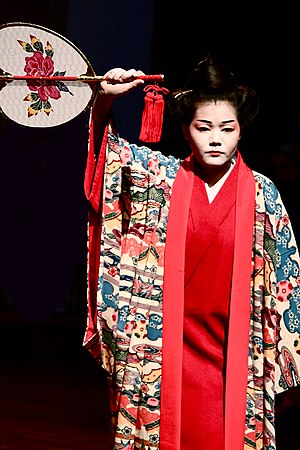About: Ryusou
Ucinaasugai (Okinawan: ウチナースガイ/沖繩姿), also known as Ryusou (Japanese: 琉装りゅうそう, also written as ryusō) and referred as ushinchi in Okinawan, is the traditional dress of the Ryukyuan people. Ryusou is a form of formal attire; it is customary to wear it on occasions such as wedding ceremony and the coming-of-age ceremony. The ryusou became popular during the Ryukyu Kingdom period. It was originally worn by the members of the royal family and by the nobles of Ryukyu Kingdom. The Ryukyu Kingdom was originally an independent nation which established trade relationship with many countries in Southeast Asia (Java, Malacca, and Palembang) and East Asia; they held their relationship with China as especially important. The development of the ryusou was influenced by both the hanfu and the kimono, demo




